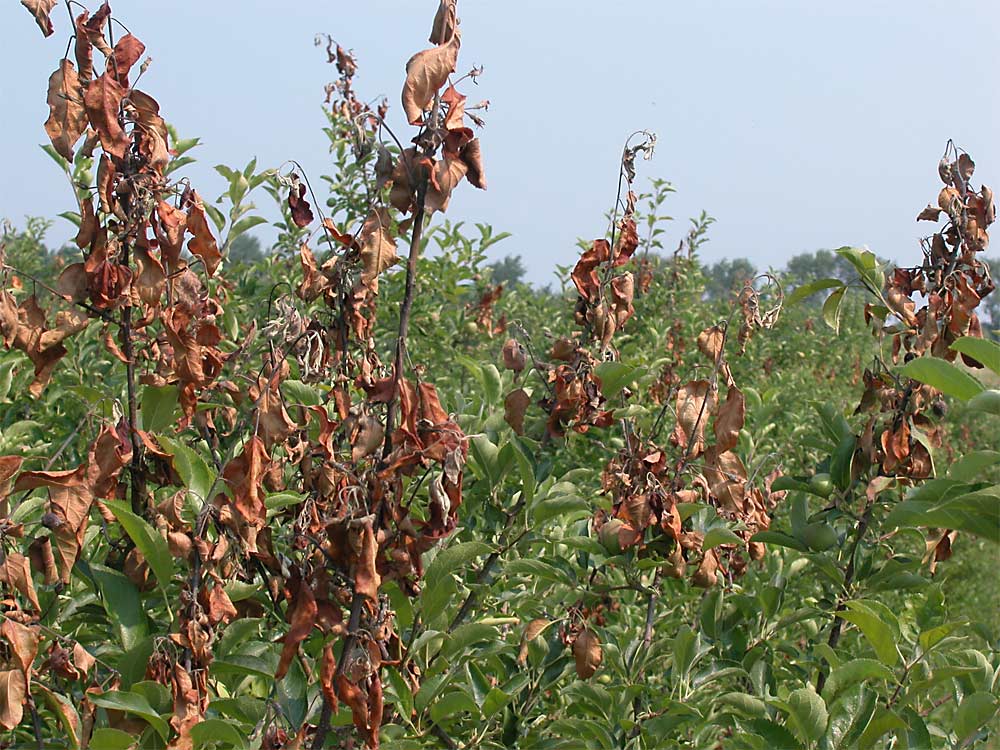
The U.S. Department of Agriculture’s National Institute of Food and Agriculture has awarded a $5.2 million grant to Michigan State University’s George Sundin and Nikki Rothwell to study control methods for fire blight, a critical bacterial disease for the U.S. apple and pear industries.
The four-year project, “Comprehensive Fire Blight Management for the United States,” will begin this fall and includes researchers from the University of Illinois, University of California, Cornell University, Washington State University, North Carolina State University and Oregon State University. A board of apple growers throughout the country, including two from Michigan, will serve as project advisers, according to an MSU news release.
“The goals and potential outcomes for growers are fairly immediate,” Sundin said in the release. “We want to do the work and be able to almost immediately use our extension programs to get this out to growers.”
Sundin, a professor and extension specialist at MSU’s Department of Plant, Soil and Microbial Sciences, and Rothwell, director of MSU’s Northwest Michigan Horticulture Research Center, will lead the project team in studying how resistance inducers — chemical and biological substances that enhance a plant’s ability to fight off a pathogen — can be used to manage fire blight. The team will identify resistance-associated genes in apples and how the degree of induction varies based on cultivar and environmental factors. Once they have a better understanding of these genes, site-specific recommendations can be provided for orchards with different varieties and growing conditions, according to the release.
“Ultimately, we’ll be able to tell growers under which conditions they should or shouldn’t use resistance inducers so that they can get better precision in their control procedures,” Sundin said in the release.
Fire blight resistance genes exist primarily in crab apple-type hosts, used more for landscaping than eating. One of the project’s goals is to breed popular commercial apple varieties with crab apples to combine desirable consumer traits with increased resistance and reduced sensitivity to fire blight, according to the release.
“The best way to control any disease is by breeding, where the host has built-in disease resistance,” Sundin said in the release. “It takes decades to breed good apple varieties that consumers are going to like, and there aren’t any with fire blight resistance now.”
Sundin and Rothwell said they hope to generate pre-breeding lines, which would be released to existing breeders to improve upon.
“It’s our hope that within the next 10–15 years, we could have commercially available apples with really excellent fruit quality combined with fire blight resistance,” Sundin said in the release.
—by Matt Milkovich






Leave A Comment